For the past few years, my fellow travel writers have been waxing poetic about Tbilisi, the capital of the of country of Georgia. This tiny nation, hampered with a name that is often confused with the State of Georgia in the U.S., was suddenly being added to everyone’s wish list. For decades, Georgia was virtually unknown in travel circles. Most didn’t even realize that the Caucasus, as the region is known, is part of Europe. Tucked between the Greater Caucasus Mountains in the north, the Lesser Caucasus Mountains to the south, the Black Sea to the west, and the Caspian Sea to the east, the three Caucasus countries of Georgia, Armenia, and Azerbaijan form the border between Europe and Asia.
Those who had visited Georgia raved about the variety of things to do in Tbilisi. The city’s gorgeous churches, historic wooden houses with ornamental carved facades and balconies, quirky Old Town, glittering glass and steel Peace Bridge, sidewalk cafes, and the region’s famous wines were all touted as top attractions. And if that wasn’t enough, I was repeatedly reminded that Americans get a year visa upon arrival, no questions asked. I was sold. I booked my ticket and set off to explore the region.
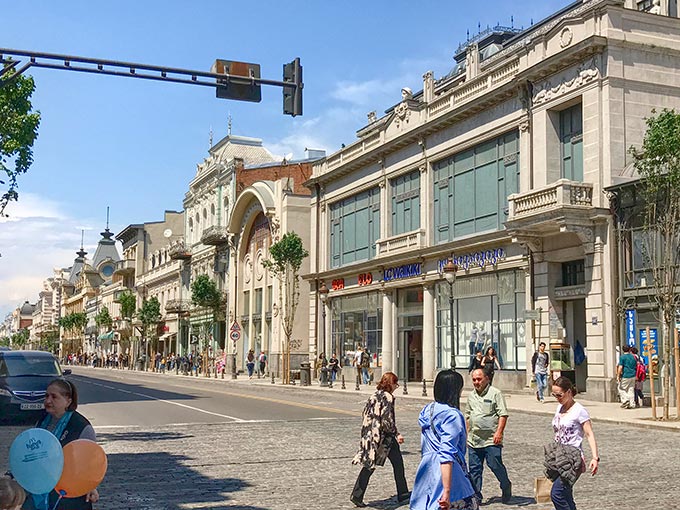
On my first day I needed to wind down from my overnight train from Baku, Azerbaijan. I dumped my luggage and went for a leisurely walk in the Marjanishvili neighborhood, with its beautiful 19th century mansions. I struck gold that first day when I wandered into Barbarestan Restaurant, reputed to be the top eatery in Tbilisi. I was treated to a delicious meal based on ancient Georgian cuisine and waddled back across the street to my hotel, filled with excitement about my next few days.
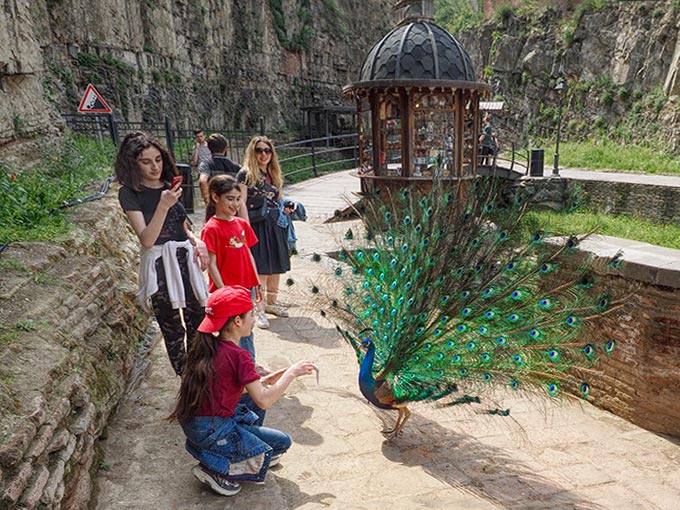
After a good night’s rest I set out to see the old wooden houses, the ancient Persian Sulphur Baths, and Dzveli Sulphur Waterfall in Old Town. The path leading to the waterfall was crammed with tourists and touts looking for tips. Men with peacocks, monkeys, and falcons on leashes roamed through the crowd. One of them placed a falcon on my arm. When I looked directly at him and said, “I have no money,” the bird was promptly removed.
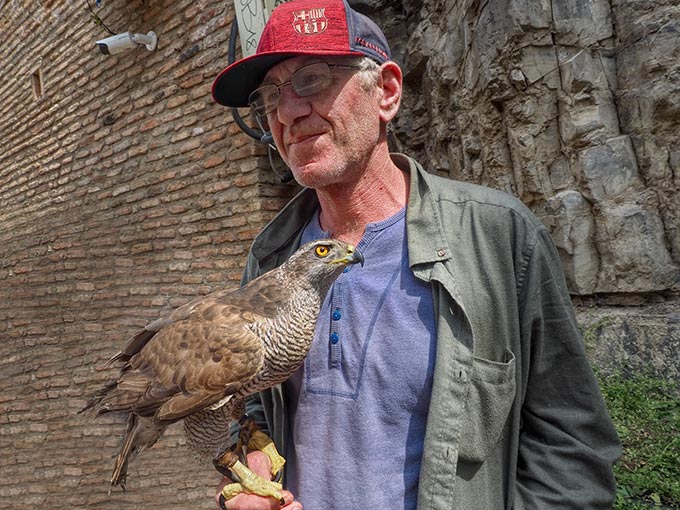
As for the historic wooden houses and Persian Sulphur Baths, I was sorely disappointed. The wooden houses were few and far between, and the old brick and concrete Persian baths were more in demand as a playground for kids than for their traditional scrubs.

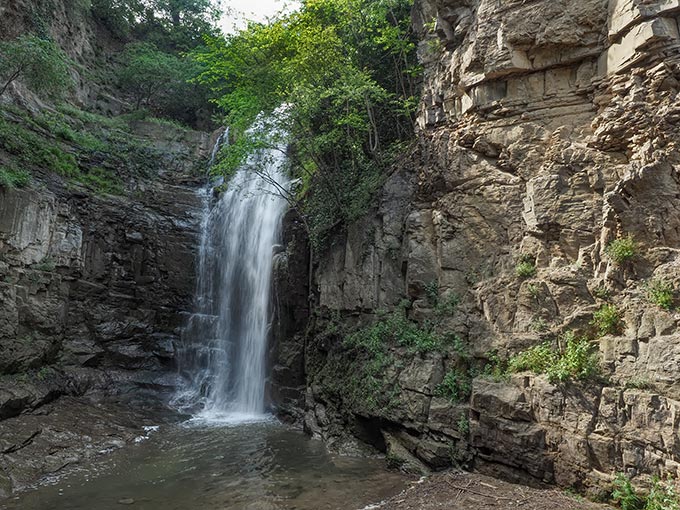
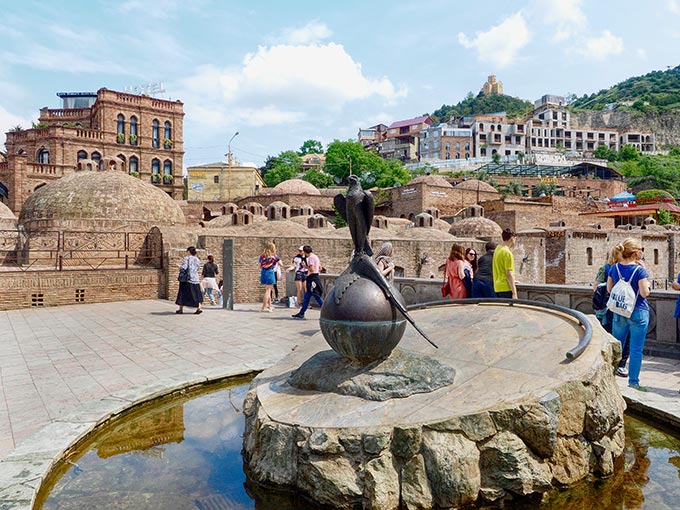
Hoping to escape the masses, I wove through a pedestrianized street where restaurant tables left only a foot or two for people to pass. Eventually I reached the foot of the Peace Bridge, a modern structure of glass and steel tubing that spans the heavily polluted Mtkvari (Kura) River. The bridge was pretty, but the experience of walking across was ruined by young men who loitered along its length, blasting tunes from boom boxes. It reminded me a lot of the energy on the St. Charles Bridge in Prague, another case of too much tourism success.
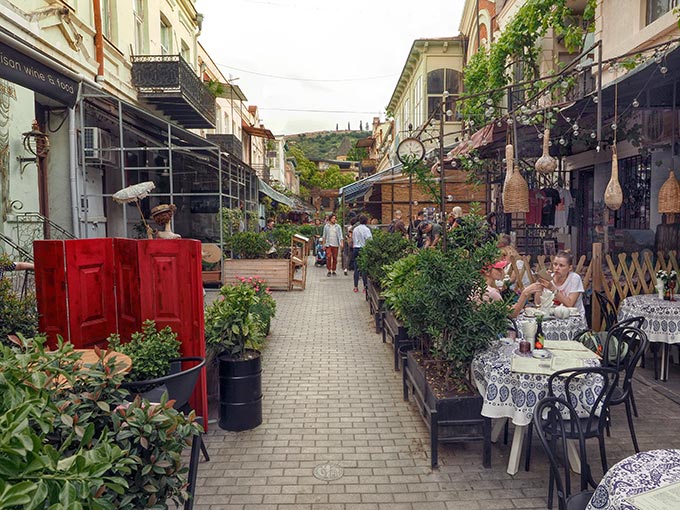

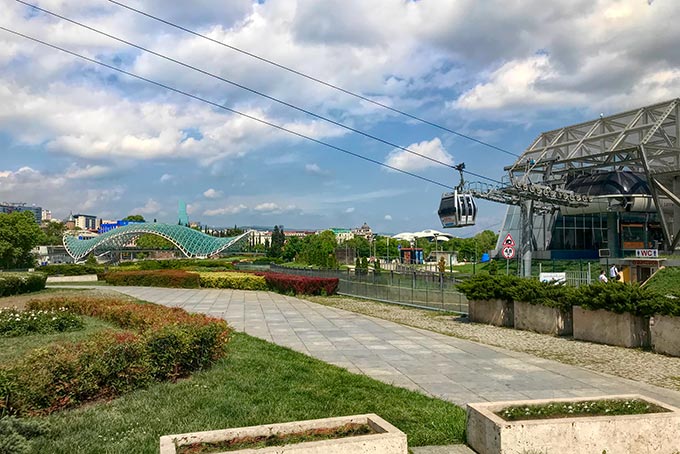
By this point, I was becoming disenchanted but I decided to give the city another chance. I began day three at SOSA Artisanal Cafe and Bakery (a real find!), where I spent a pleasant hour over coffee and chocolate eclairs, chatting with the delightful Turkish owners. Then it was time to hit the pavement again.
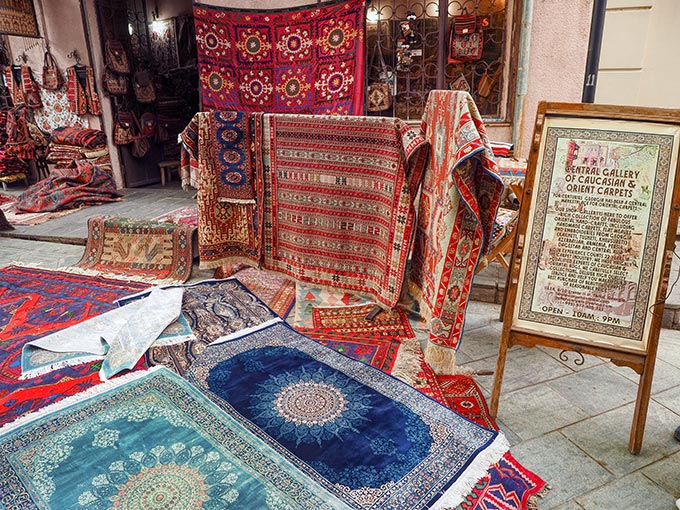
My initial destination was the Dry Bridge Flea Market. This wonderland of Soviet-era war medals, silverware, jewelry, and traditional Caucasus rugs was terrific eye candy, but I wasn’t in the market for chachkes. I continued onto Rustaveli Avenue, home to museums, the Parliament of Georgia, the Tbilisi Youth Palace, and the weekly Tbilisi Street Market. At the terminus of Rustaveli Avenue I found Freedom Square and Pushkin Park. The neighborhood was interesting but certainly not spectacular.
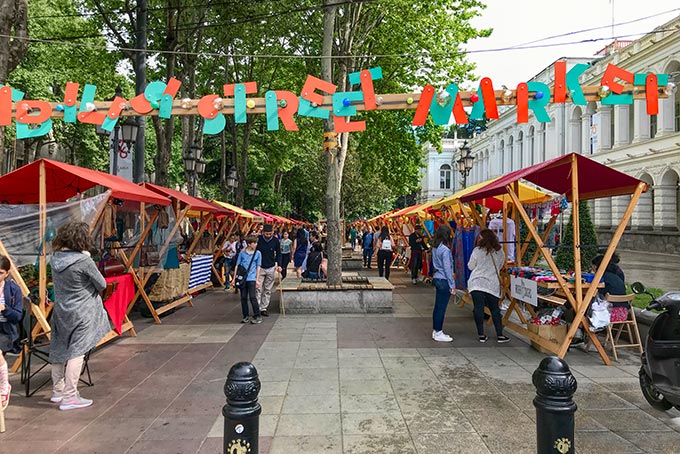
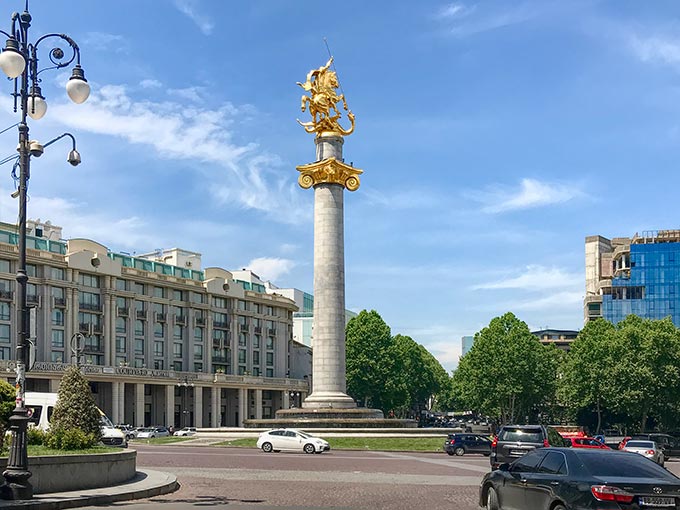
With a good five miles to my credit, I decided to call it a day. I found a sidewalk cafe with vegetarian options and ordered a Greek salad. A few minutes later my server placed a tiny veggie sandwich in front of me. Rather than cause a fuss, I decided to just eat what they’d served me.
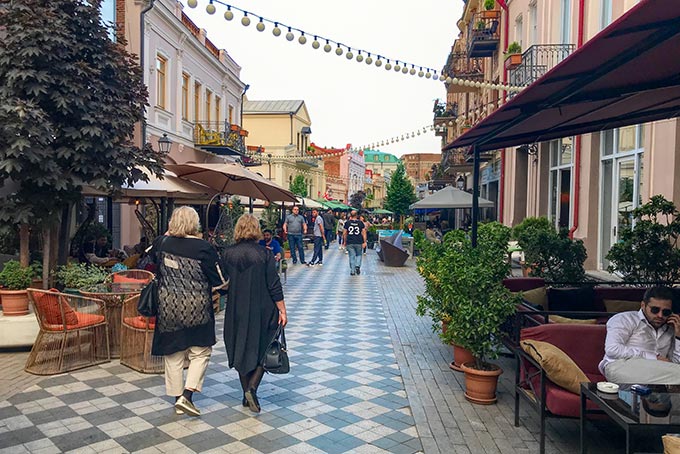
Throughout my meal, the staff was inattentive, more concerned with smoking and cracking jokes with friends. They did, however, find time to throw a glass of water at a lovely black Labrador, one of Tbilisi’s ubiquitous stray dogs that have been spayed and given shots. That was it for me. I was incensed. Moments earlier, the dog had been sitting at my feet, happily letting me scratch its head. “Why are you doing that?” I asked. “It’s a sweet dog.” My server said the people at the table behind me were afraid of it. Disgusting. No tip for that crew.

By day four I was totally disappointed. I simply couldn’t reconcile the city that had been described to me with the city I was experiencing. Certain that I must have missed some of the most interesting things to do in Tbilisi, I returned to the Old Town area to take another look. At the Leaning Clock Tower of Tbilisi a mob of tourists was waiting for an angel to emerge and strike a bell at the top of the hour. But even this was not the history I was looking for. The clock tower had been built in 2010 by puppet master Rezo Gabriadze to advertise his adjacent puppet theater.

Frustrated, I turned onto ancient stone-paved streets that wound up the hillside behind the Old Town tourist area. The area was not shown on any tourist map, but here, at long last, I found a handful of authentic houses and shops, as well as two gorgeous old churches. At the top of the hill I rested in the peaceful courtyard of Jvaris Mama Church, with its burbling Artesian spring. Back down at the foot of the hill I stopped into Sioni Cathedral. In addition to its stunning mid-19th century Iconostasis, the cathedral is home to the sacred cross of St. Nino, the patron saint of Georgia. The cross is said to be made of grapevine branches woven with the saint’s own hair.

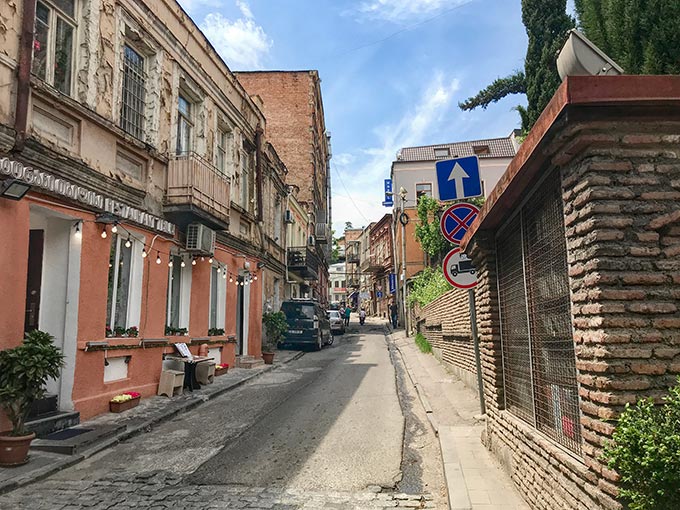
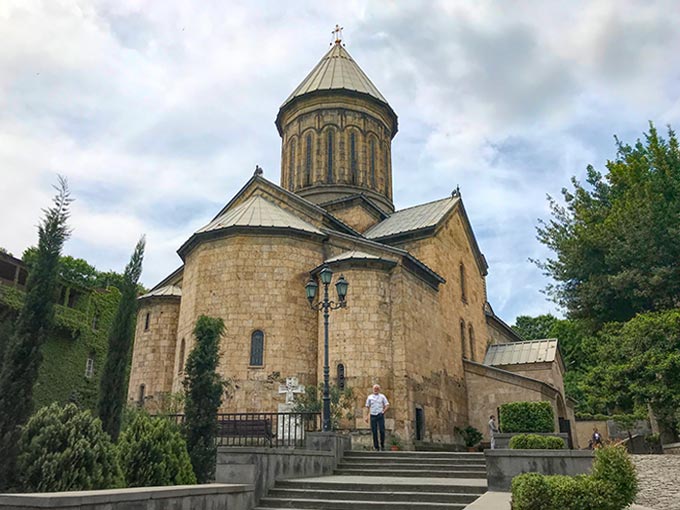
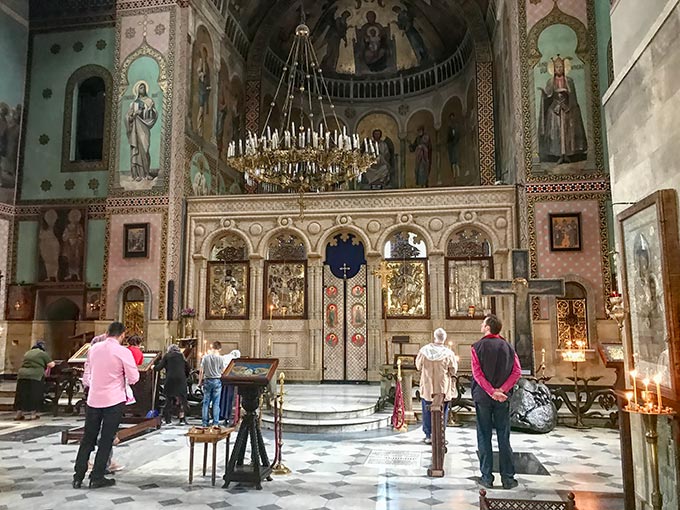
Hoping to cap off the day with the pièce de résistance, I crossed back over the Mtkvari (Kura) River and trudged uphill to Holy Trinity Cathedral. Known to locals as Sameba Cathedral, Tbilisi’s newest church was completed in 2004. The immense Cathedral was built to commemorate 1,500 years of the Georgian Orthodox Church and the 2,000th anniversary of the birth of Jesus. It is the third-tallest Eastern Orthodox cathedral in the world and one of the largest in the world by total area. It must have cost millions to construct. Considering that the average monthly salary for most Georgians is about $400, and that the city still dumps untreated municipal wastewater directly into the river, the money spent on this church seems particularly unconscionable.

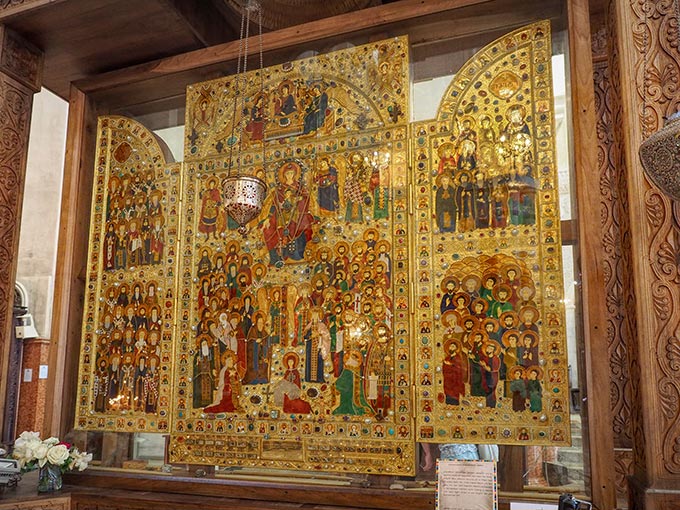
Even worse, the structure is cold and sterile, both inside and outside. The only interesting thing inside the church was a jewel-encrusted “Hope of Georgia” Icon but even that turned out to be modern. The church offered people the opportunity to donate their gold and silver jewelry, which was recycled as religious ornamentation for the Icon. Disgusted, I finally gave up and returned to my hotel, where I booked a tour of the surrounding countryside for my final day. Hopefully, the rural areas will offer more of an authentic travel experience because, for me, Tbilisi was little more than a Georgian Disneyland.
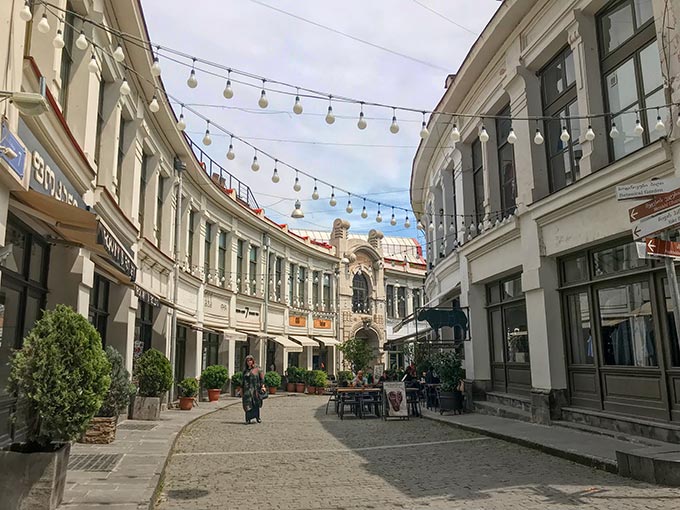
You may also enjoy:
Interior of St. Basil’s Cathedral in Moscow, Russia
The Mail Order Bride Scam in Ukraine
Albania – The Holy Grail for Intrepid Travelers

Wow! As a person who visited Georgia several times, your report sounds to me pretty much out of place, hubristic, and biased… I know a lot of people who only have good words to say about Georgia. But again – to each his own. I suggest you to go round your own country. Maybe that’ll open your eyes just a little bit.
I served as a waiter at “Barbarestan” until the pandemic and it was very lovely to find your article. I am glad you liked it. As a Georgian I also fully agree that most part of old Tbilisi is just a touristic crap and for me, the aesthetic beliefs of those people who admire it, was always doubtful. Most restoration work was made during the last two decades, without any deep considerations of its context and authentic architectural values.
Also, as you mentioned, there is a problem about expectations, it is not correct to go Tbilisi and expect that you will discover some ancient authentic soul of city, or buildings. The city is very unfortunate, it was fully demolished several times before the 18th century. There isn’t a single secular building in Tbilisi dated from 18th century or earlier.
If you ask me what is adequate expectation for Tbilisi, it is a mess, interesting in its own way. It is the mixture of ancient churches, old simple house architecture from the 19th century, also from this period are dated dozens of very interesting buildings from several European, Russian, Armenian and Georgian architects, whose are generally located adjacent (generally upper-right streets) areas of avenue Agmashenebeli (where restaurant “Barbarestan” is located) and still have authentic value(did you investigate that area?) also upper streets of Rustaveli avenue. Agmashenebli itself is part of the bad restoration of the last decades, but inside the buildings there can be found amazing interiors. Another part which is worth mentioned is soviet architecture, it is totally worth to dedicate one day to it. And whereas you go as a background always will be hell architecture from the last 30 years to remind you the hard destiny of this ancient nation, throughout its history :))
Hi Junior: Thanks so much for your comment. I actually stayed on Agmashenebeli Street, across the street from Restaurant Barbarestan, so I spent some time investigating that neighborhood. I have to agree with you that it was the most interesting area of the city, and perhaps the most truly historic. I also walked the upper streets of Rustaveli Avenue. As you say, quite a mish mash of architecture, but better than the touristy and over-rated center of the city.
Barbara, new to your blog and loving it! As a former Geography teacher, and Georgia born and raised until 5 years ago when I moved to Texas, most American do not realize that Georgia is both a country and a U.S. state. But then again, they consider themselves to be Americans, and forget that Canadians and Mexicans are Americans too. I am sorry that you did not have a better experience, but I think why I finally decided to comment was that so often travel writhes feel they have to “sell” every place they visit and this post gives a much better, honest view of the real experience had there. I got vilified when I traveled to Guangxi, China and reported home that I didn’t enjoy my experience in Guiping; loved Guangxi, but I wish we would have gone to Guilin, live and learn. Best wishes!
Thanks so much for your comment Deb. I didn’t dislike Tbilisi, it just didn’t measure up to all they hype I’ve read about it. But there were gems, like Restaurant Barbarestan, and of course, my day trip to Mtskheta. I try to always tell the truth, without becoming sensational, but in the very rare instances that I’ve totally panned a place, the trolls usually come out of the woodwork and attack me verbally. So your comment was refreshing and I wanted you to know how much I appreciated it.
“This tiny nation, hampered with a name that is often confused with the State of Georgia in the U.S”…I fail to understand why any educated person could possibly confuse a nation which has survived for over a millenium with the stolen homeland territories of the Cherokee, Apalachee, Muskogee Creek, Hitchiti, Oconee, Miccosukee, Timucua, Yamasee, Guale, Shawnee and Yuchi people, now named after the british king George II only a few hundred years ago. As for your disappointment in Tbilisi, you might have had a better experience had you managed to befriend some of the local people, who would have steered you away from the tourist traps and given you an opportunity to experience the rich culture of the place – but that is the reality wherever one travels.
M. Joyce: I KNOW the difference between the country of Gergia and the state of Georgia in the U.S., but many don’t. I stand by my comment that there is general confusion about the name, at least in the U.S., as many Americans are not even aware there is a country named Georgia. And as for befriending locals, I paid for locals to take me on a private tour. These locals were quick to point out that there were few “locals” to be found in the city center. Perhaps you should be pointing the finger at your own people.
” There are few locals in the city center ” made me laugh out loud …….i live just off ” Dry bridge ” area ……I am surrounded and greeted by local Georgians every day ……I have lived there for over ten years …….I am so sorry you were disappointed …….It is true , as some one else said , ” You must stay away from the Tourist Traps ” …….in my mind : ” especially the Old Town / Those two main streets you where on ” ( I really dislike them )
…. More wondering ……..You where so close to being able to have a fascinating visit ….if you ever want to come again ,I know all the places the tourist don’t go …… ” The Real Tbilisi ” …..it is still there. Of what you saw , most of your assessment is accurate…… There is so much more. deb dunn
Barbara, sorry to hear of your disappointment with your visit to Tbilisi especially since your expectations fell far short of the reality. The incidents with the hawkers, boombox kids, and waiter throwing water on the nice dog would certainly have bothered me too. As for wishing limited funds would have been spent elsewhere other than on the Holy Trinity Cathedral, it doesn\’t surprise me that the cathedral was built rather than investing funds on other projects. The world over it seems that poor towns often have massive houses of worship. Articles on the Holy Trinity Cathedral state that it is seen as a \”symbol of the Georgian national and spiritual revival,\” so the Georgians\’ pride in their cathedral must be much greater and on a deeper level than we can imagine — especially when considering the history of the Stalin era\’s \”dim\” view of organized religion. All this being said, I really enjoyed your candid blog and lovely photos as always!
Hi Sylvia: Thanks so much. I concur with your assessment that many poorer regions of the world are home to magnificent cathedrals, synagogues, temples, and mosques. It always seems jarring to me, but then I’m more spiritual than religious in my beliefs. I really appreciate your comment that you enjoy my blog and photos – it means the world to me.
I spent over a year in Georgia in 2011-2012 as a Peace Corps volunteer. We were told, and it’s true, that there are two Georgia’s: Tbilisi and the rest of the country. Batumi has now grown out of control, but the villages and people outside of the large cities are lovely.
That was my feeling as well, Connie. Good to hear my “gut” was right on point.
I’m so glad you tell it like it is. Too bad you experienced a disappointing stay. Looking forward to hearing about the rural tour – hope it’s better!
It definitely was, Irene. I’d like to return one day to explore more of the countryside, as it’s quite beautiful.
Thanks for this very honest account of your visit to Tbilisi, Barbara. Georgia is one of the few countries in Asia that I’ve not yet visited and it was high on my bucket list because, like you, I’ve being hearing other travel writers rave about its virtues for several years now. It’s unfortunate that when you go to new places with high expectations, they don’t meet those expectations. Now at least when I go to Georgia it will be with lower expectations. I look forward to reading the next account of your visit to the rural areas. I’ve shared this on our Facebook page today because your article and excellent photographs provide an insightful overview of what to expect in Tbilisi.
Thanks for your kind comment David. I think you hit the nail on the head. I didn’t hate Tbilisi. I didn’t even strongly dislike i I just felt sort of “meh” about it, and I think a lot of that had to do with my expectations being too high. It’s one of the reasons that I usually go to a new place without doing much research. I don’t want to have expectations because they can easily set me up for disappointment. But in this case, I’d read so much about the city, it was impossible not to have some expectations. It’s worth a visit, and I think you’ll find the countryside much different.
As a fellow writer/journalist I appreciate your candor. Not your typical travel writer. Look forward to getting your blog post every Sunday night.
Thank you so much Fred. I think by now you know how much your comment means to me 🙂